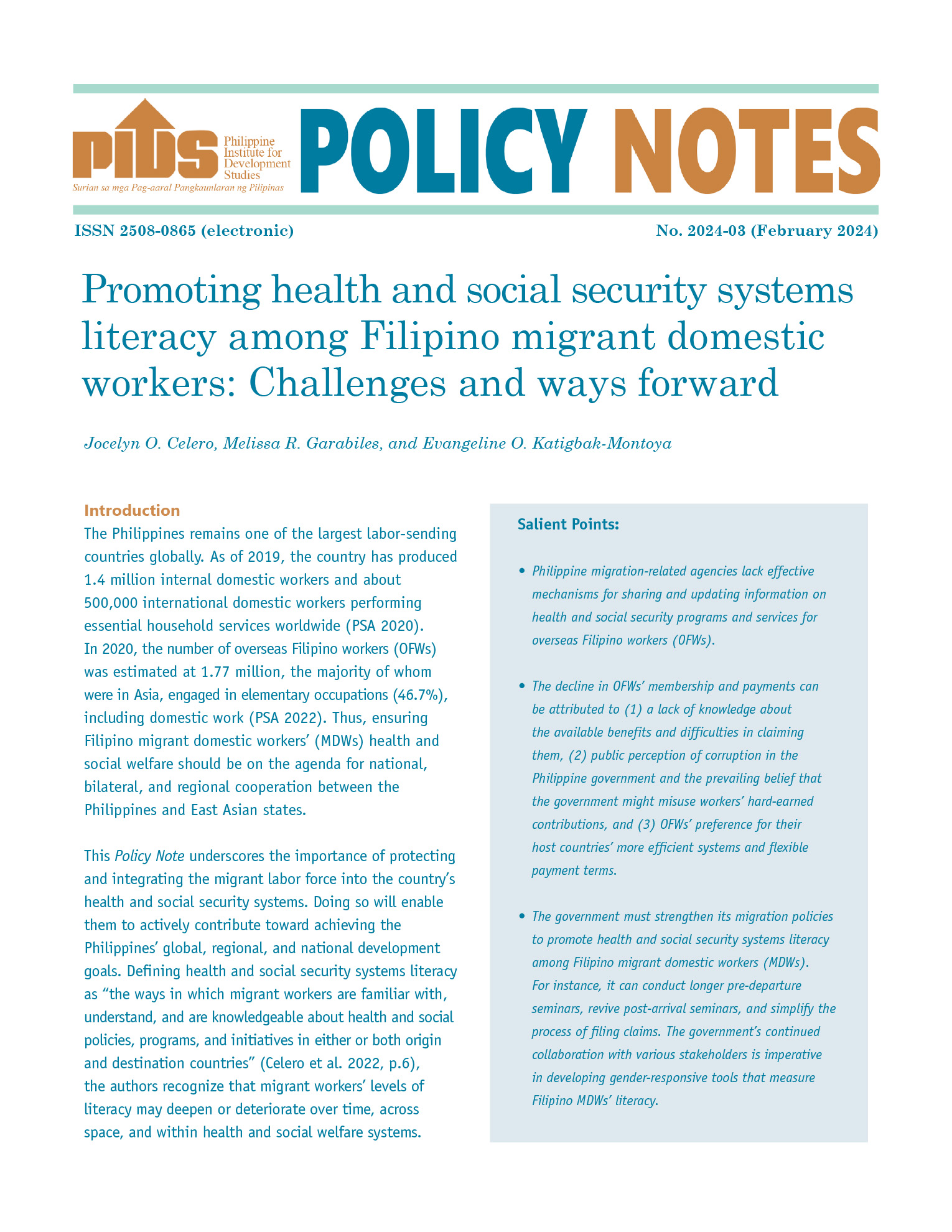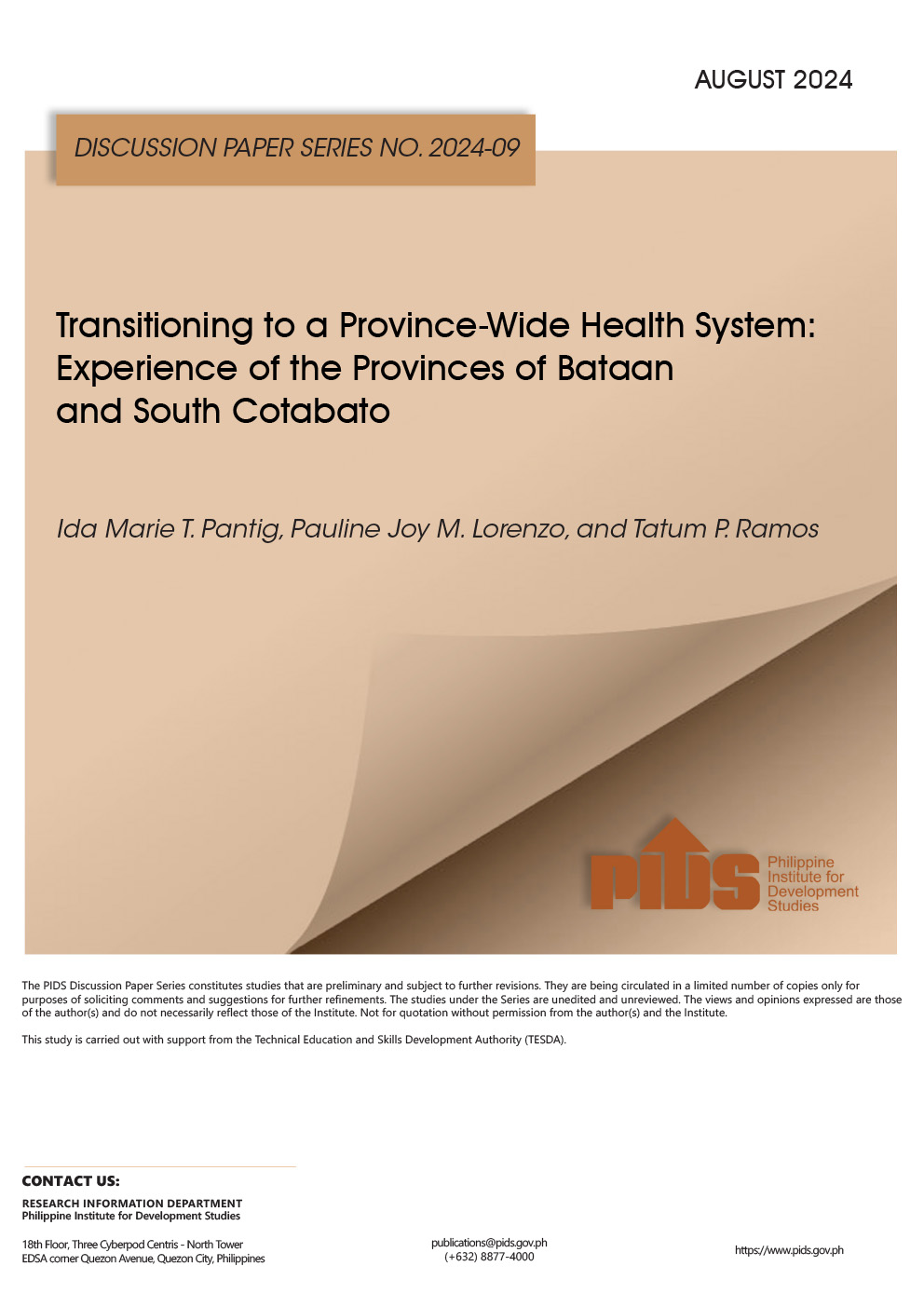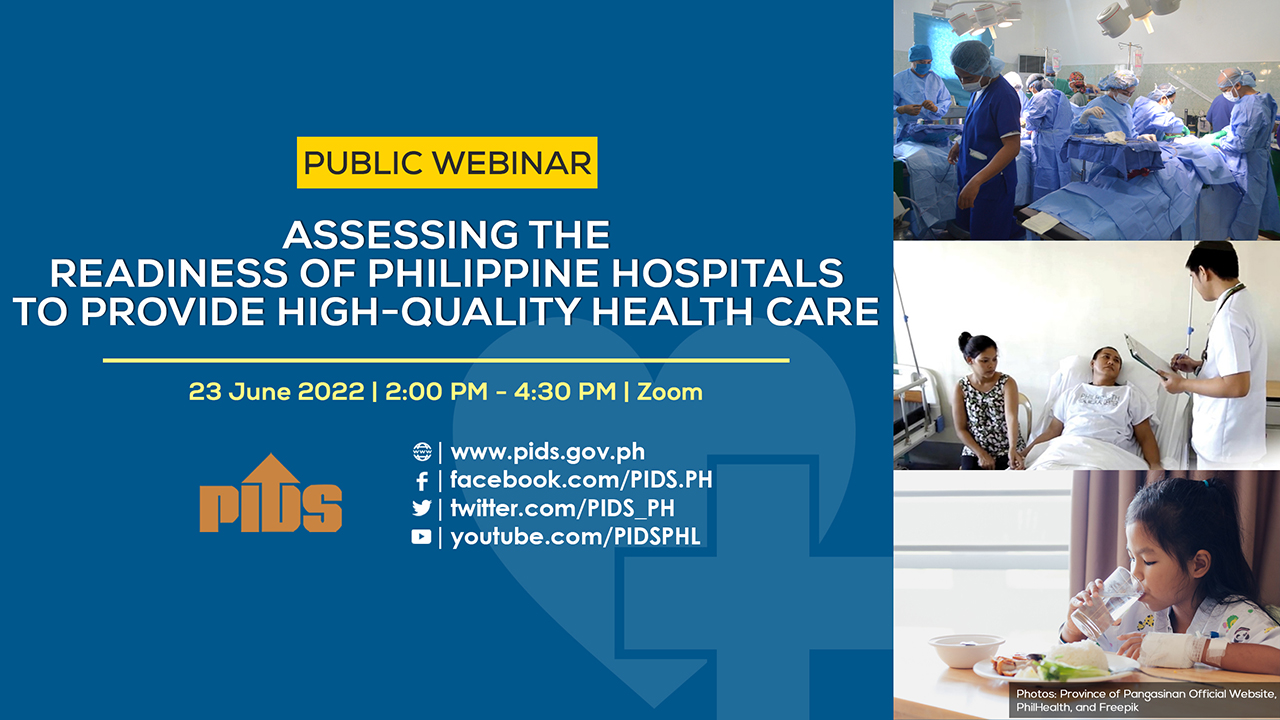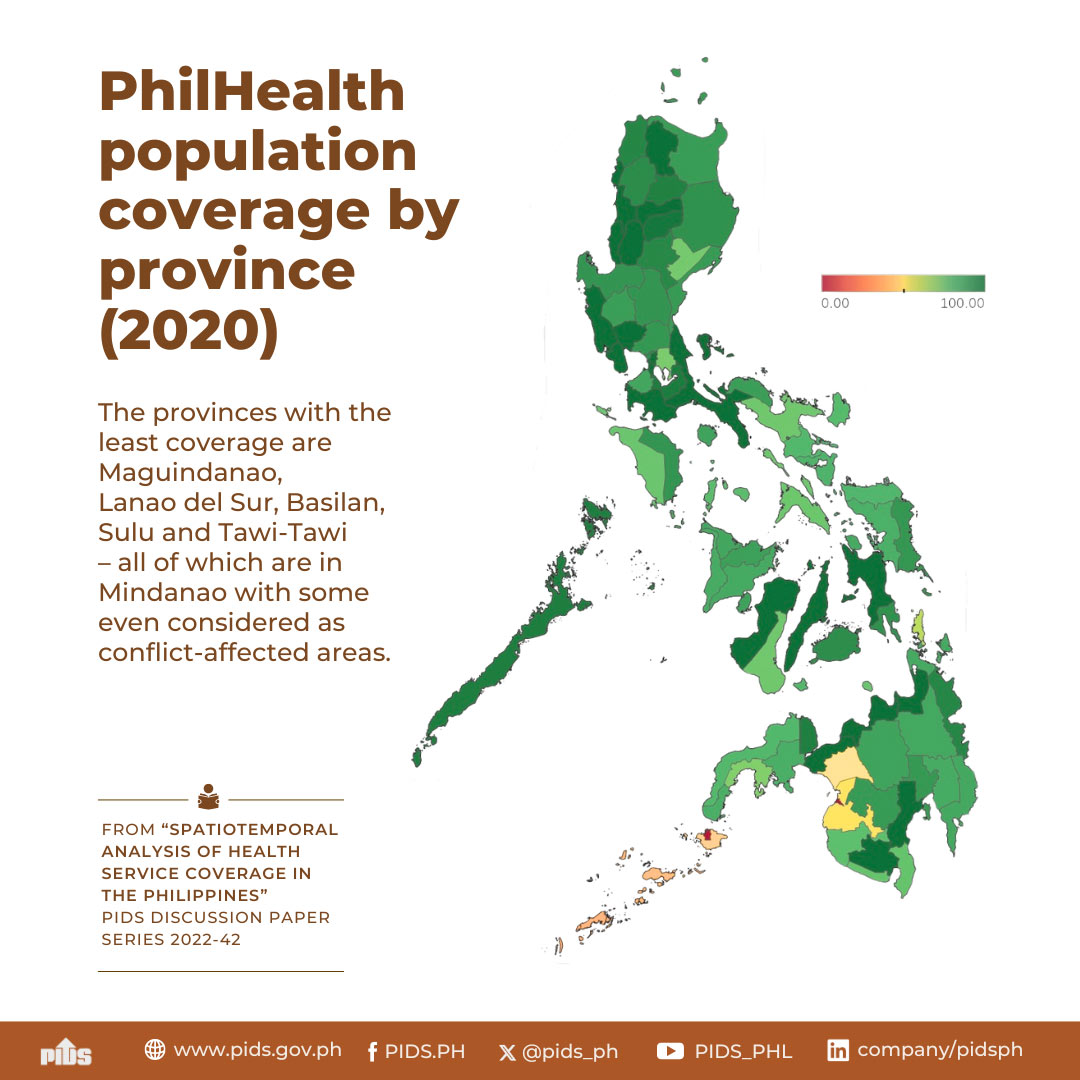Building more health facilities and investing in medical equipment allow government hospitals and infirmaries to provide quality health services to more people.
In a study conducted by state think tank Philippine Institute for Development Studies (PIDS) evaluating the Health Facilities Enhancement Program (HFEP) of the government, it was noted that hospitals and infirmaries that received funding from the government to upgrade their facilities showed higher volume of services than those that did not.
The HFEP, which is being implemented by the Department of Health, is a major undertaking under the Aquino administration’s flagship health initiative called Kalusugan Pangkalahatan that aims to achieve universal health care for all Filipinos. Through building and equipping public health facilities, the government hopes to keep up with the increasing population’s demand for health care.
From 2010 to 2014, HFEP funded a total of 1,199 hospitals and infirmaries with an aggregate infrastructure funding of PHP 11.7 billion. Likewise, a total of 2,968 rural health units (RHUs) and city health offices (CHOs) received infrastructure funding amounting to PHP 5.2 billion. Total HFEP infrastructure funding for the period reached PHP 16.9 billion, or roughly PHP 3.4 billion a year. Meanwhile, the average funding per health facility is small, with only PHP 9.8 million per hospital or infirmary and PHP 1.8 million per RHU or CHO.
In a recent seminar held in Quezon City, PIDS Supervising Specialist Ida Marie Pantig said, utilization of health services hospitals and infirmaries that implemented HFEP projects experienced increase in the services provided, measured by increase in the average number of outpatient consultations, birth deliveries, and inpatients per day.
Likewise, new services are being introduced with the new and improved health facilities. These include birthing facilities, animal bite centers, modern diagnostic and imaging centers, sewage treatment plants, and new morgues.
"The service expansion is most pronounced in RHUs that now have separate facilities for birthing, tuberculosis treatment, and dentistry," Pantig observed.
However, she also highlighted that for most part, HFEP is just replacing old hospital facilities. "There have been no completely new hospitals. The new facilities that were constructed merely replaced old existing hospitals, with no major expansion in bed capacity," she explained.
In addition, she argued that the impact of capital investments in these health facilities is often diluted by staff shortage and dramatic contractualization of health workers as well as persistent drug shortage.
However, while HFEP has been found to have a positive impact on the utilization of local health services, its implementation has been highly problematic, as documented in the survey.
One of the problems identified in the PIDS study is the inadequacy of HFEP funding that necessitated some local governments to contribute their own funds to complete the construction of facilities.
Another problem is the delay in the completion of construction projects, which usually takes an average of 3 to 4 years due to lack of budget. Sometimes, hospitals and RHUs had to delay construction to prevent any disruption in their operations. In other cases, the delays were caused by contractors who were involved in multiple projects.
"These problems should be addressed to speed up the construction and equipping of health facilities. This way, a far greater impact can be generated for the benefit of Filipinos, especially the poor," Pantig said.
In terms of funding and contract management, the PIDS study suggested that facilities to be supported by HFEP should be organized into sets, lots, or tranches that can be offered to would-be contractors under "contracting in lots" approach, preferably on a turn-key basis. Likewise, the current practice of incremental, multi-year infrastructure funding with "finish one-at-a-time but quickly" approach must be replaced.
To ensure sustainability of the projects, the authors suggested that program implementers should explore how the requirement of the Department of Budget and Management (DBM) limiting the proportion of internal revenue allotment that can be spent on personal emoluments can be waived. Also, support of the national government should be sought to augment the budget for human resources.
This impact evaluation study conducted by PIDS aims to assess the net effect of the program by comparing outcomes with an estimate of what would have happened in the absence of the program. It is part of a research project conducted by PIDS to evaluate the effectiveness and impact of key government programs and projects. Spearheaded by the National Economic and Development Authority and the DBM, the impact evaluation studies were conducted to promote greater transparency and accountability in government.
In a study conducted by state think tank Philippine Institute for Development Studies (PIDS) evaluating the Health Facilities Enhancement Program (HFEP) of the government, it was noted that hospitals and infirmaries that received funding from the government to upgrade their facilities showed higher volume of services than those that did not.
The HFEP, which is being implemented by the Department of Health, is a major undertaking under the Aquino administration’s flagship health initiative called Kalusugan Pangkalahatan that aims to achieve universal health care for all Filipinos. Through building and equipping public health facilities, the government hopes to keep up with the increasing population’s demand for health care.
From 2010 to 2014, HFEP funded a total of 1,199 hospitals and infirmaries with an aggregate infrastructure funding of PHP 11.7 billion. Likewise, a total of 2,968 rural health units (RHUs) and city health offices (CHOs) received infrastructure funding amounting to PHP 5.2 billion. Total HFEP infrastructure funding for the period reached PHP 16.9 billion, or roughly PHP 3.4 billion a year. Meanwhile, the average funding per health facility is small, with only PHP 9.8 million per hospital or infirmary and PHP 1.8 million per RHU or CHO.
In a recent seminar held in Quezon City, PIDS Supervising Specialist Ida Marie Pantig said, utilization of health services hospitals and infirmaries that implemented HFEP projects experienced increase in the services provided, measured by increase in the average number of outpatient consultations, birth deliveries, and inpatients per day.
Likewise, new services are being introduced with the new and improved health facilities. These include birthing facilities, animal bite centers, modern diagnostic and imaging centers, sewage treatment plants, and new morgues.
"The service expansion is most pronounced in RHUs that now have separate facilities for birthing, tuberculosis treatment, and dentistry," Pantig observed.
However, she also highlighted that for most part, HFEP is just replacing old hospital facilities. "There have been no completely new hospitals. The new facilities that were constructed merely replaced old existing hospitals, with no major expansion in bed capacity," she explained.
In addition, she argued that the impact of capital investments in these health facilities is often diluted by staff shortage and dramatic contractualization of health workers as well as persistent drug shortage.
However, while HFEP has been found to have a positive impact on the utilization of local health services, its implementation has been highly problematic, as documented in the survey.
One of the problems identified in the PIDS study is the inadequacy of HFEP funding that necessitated some local governments to contribute their own funds to complete the construction of facilities.
Another problem is the delay in the completion of construction projects, which usually takes an average of 3 to 4 years due to lack of budget. Sometimes, hospitals and RHUs had to delay construction to prevent any disruption in their operations. In other cases, the delays were caused by contractors who were involved in multiple projects.
"These problems should be addressed to speed up the construction and equipping of health facilities. This way, a far greater impact can be generated for the benefit of Filipinos, especially the poor," Pantig said.
In terms of funding and contract management, the PIDS study suggested that facilities to be supported by HFEP should be organized into sets, lots, or tranches that can be offered to would-be contractors under "contracting in lots" approach, preferably on a turn-key basis. Likewise, the current practice of incremental, multi-year infrastructure funding with "finish one-at-a-time but quickly" approach must be replaced.
To ensure sustainability of the projects, the authors suggested that program implementers should explore how the requirement of the Department of Budget and Management (DBM) limiting the proportion of internal revenue allotment that can be spent on personal emoluments can be waived. Also, support of the national government should be sought to augment the budget for human resources.
This impact evaluation study conducted by PIDS aims to assess the net effect of the program by comparing outcomes with an estimate of what would have happened in the absence of the program. It is part of a research project conducted by PIDS to evaluate the effectiveness and impact of key government programs and projects. Spearheaded by the National Economic and Development Authority and the DBM, the impact evaluation studies were conducted to promote greater transparency and accountability in government.












